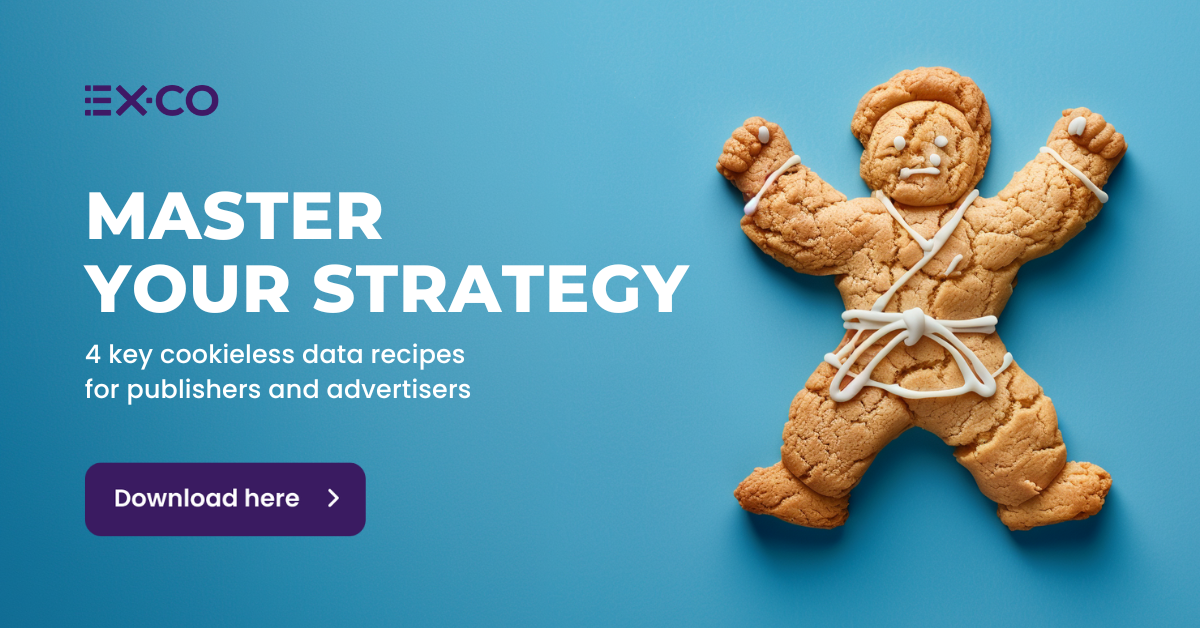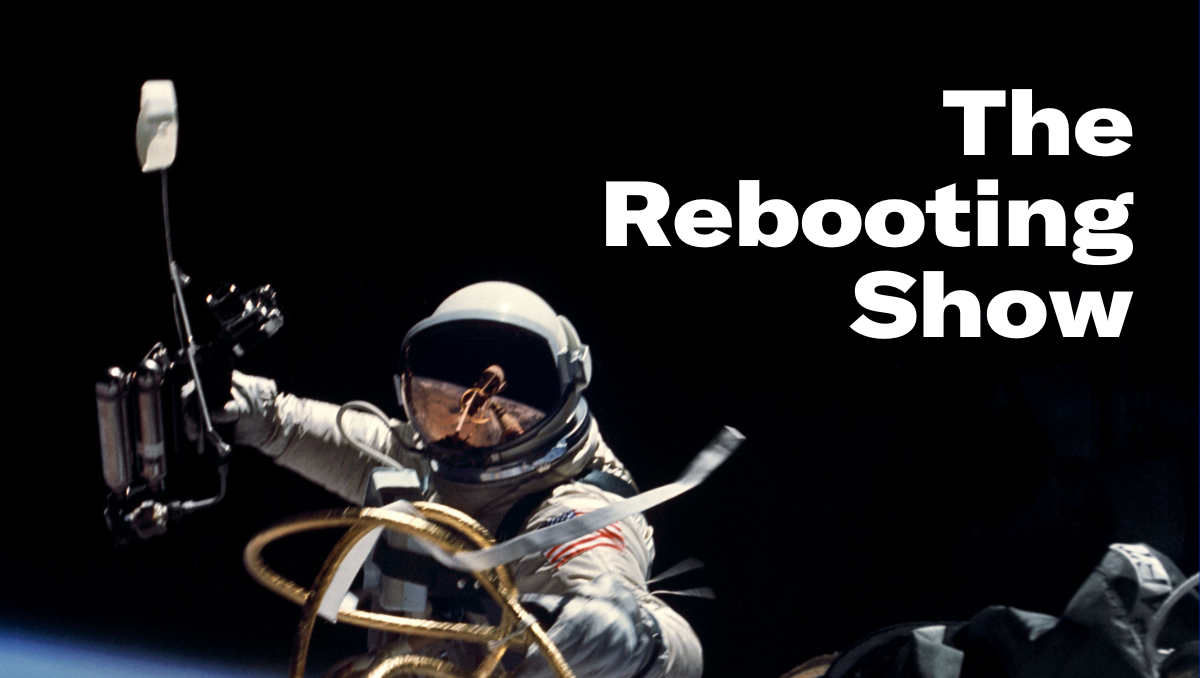Mass brands without mass media
The fragmentation of media is a problem for mass brands

With Google yet again going back to the drawing board on the fate of the third-party cookie, I’m interested in understanding how publishers are approaching the identity puzzle. Please take this four-question survey.
Today's newsletter:
- The end of mass media means challenges for mass brands
- A conversation with Ana Andjelic about the challenges of building mass brands in a fragmented media ecosystem

Google schmoogle

Yes, Google announced they will keep cookies in Chrome for now, but they are still encouraging the development of privacy-preserving alternatives. Therefore, the industry must continue working towards a cookieless future. EX.CO’s new industry guide offers actionable strategies for privacy-safe online advertising that can be implemented today. You’ll also gain first-hand advice from leading experts on how to navigate targeting without cookies.
Brands lost in the information space
The Olympics will wind down next weekend, bringing to a close a major global event that, like the Super Bowl and other mass media spectacles, is increasingly an anomaly. Brands pile into these mega moments, even if they’re more fragmented.
The mass media era appears on its way to extinction. Even the Olympics is now atomized, with NBCUniversal’s Peacock offering the ability to choose between competitions. It’s telling that the memes that came from the Olympics tended to be in niches. When all media becomes niche, we enter into a choose-your-own-adventure world that is driven by deep personalization rather than by shared experience. NBC and Eurosport are even paying creators to drum up buzz, a sign of how the tables have turned on mass media.
The ads that get talked about nowadays tend to be ones that run afoul of some shifting cultural norm. The Olympics had Google pull a TV spot that showed a little girl using Google’s AI chatbot to write a fan letter, a warning sign that AI’s arrival is not being universally cheered as its boosters would like. This is a far cry from the tear-jerker Super Bowl ad, “Parisian Love,” from 2009. AI is tough to humanize because it’s been rolled out as anti-human. Try to pull on emotional heartstrings to laud the prospect of eliminating call centers and paper pushers. Tough brief.
Nike, now a case study for a mass brand that lost its way, poured money into the Olympics as it typically does. Its “Winning Isn’t For Everyone” campaign is its biggest marketing push in years, designed to reignite growth, even as its product pipeline lags behind and it deals with reversing an ill-thought corporate reorg. It will be interesting to see if it has much impact or satisfies investors who want to see immediate returns, not long-term brand work.
This all makes me wonder about the fate of many mass brands without mass media. The rise of both were intertwined. As media decentralizes into millions of niches it makes it harder to build mass brands and maintain the growth of legacy mass brands. Publishing has seen the decline of mass legacy brands and rise of niche brands, particularly built around personalities. The same pressures will exert themselves on homogenous mass consumer brands.
This is acute as mass media becomes subsumed in the Information Space. Algorithmic social feeds create an illusion of consensus, as discussed by Sam Harris and social media researcher Renée DiResta on the Making Sense podcast, only that consensus is within a very narrow segment. The best way to influence the Information Space is to micro-target niches that have extreme levels of passion rather than try to appeal to everyone at a time when little consensus exists. AI is convenient cover for the massive ad systems built by Google and Meta to become fully automated performance marketing black boxes.
“It used to be that advertisers came to us with a specific audience they wanted to reach – like a certain age group, geography, or interests,” Mark Zuckerberg said on Meta’s recent earnings call. “Eventually we got to the point where our ads system could better predict who would be interested than the advertisers could themselves.”
Google is doing the same with its PMax product, the latest in a long line of efforts by tech companies to build these Rube Goldberg ad machines. I was walked through this concept by a Google exec at the Astor Place Starbucks in the mid-2000s. Digitize all your product SKUs, set prices for new customers, let the machine do the rest.
This isn’t something built for mass brands, which have a wide array of activities that have nothing to do with Google or Meta. Their automated systems will not have all the data they need to optimize, but these companies are not dependent on mass brands like traditional media was. It’s why the ad boycotts have a consistent record of failure.
Mass brands have been built by co-opting culture or even creating it. That’s a tough task when there’s no cohesion, and certainly no shared experience, as the algorithms and interface design push people in self-serving directions for the platform, as The New Yorker’s Kyle Chayka has found on Spotify.
"Music on the app is most easily consumed in a disorganized cascade; every song becomes audio “content” separated from a musician’s larger body of work. In short, Spotify does not seem to care about your relationship to ‘your’ music anymore; for long-term users, this has felt like a slow-motion bait and switch.”
The internet was never hospitable to mass brands. It is too fragmented, and the early hopes to mimic magazines and other brand vehicles mostly failed. Banner ads didn’t work, nobody used those dumb Flash microsites that would crash your browser, and the promise of social media to reinvent brand advertising as people-powered was cast aside for direct marketing. Google, once dismissed to me by an ad agency exec as the ValPak of the internet, showed that the real money was at the bottom of the funnel. The only home run for brand advertising came from bringing TV ads to the internet. As always, it is instructive to follow the money.
Elon Musk’s efforts to attract mass brand advertisers to the platforms will fail. Brands don’t want to enter the gladiatorial arena; look at how swift Google backpedaled to some mild criticism. The incentives of platforms are increasingly at odds with the needs of brand advertising.
Retail media is only exacerbating that by offering a twist of performance marketing that can appeal to new categories of brand advertisers. It’s sometimes lost that outside the marketing department, few company leaders love pouring money into advertising. That Wanamaker saying about half the money being wasted was used so often because it spoke to an unease with the finger-in-the-wind nature of brand advertising. Most CFOs would prefer customer vending machines. Feed in money, get customers.
Big brands tend to be publicly traded and need to satisfy short-term shareholder desires for immediate returns. Look no further than how companies are organizing their marketing. The hand-wringing over the short tenure of CMOs has given way to hand-wringing about the elimination of the role altogether, as seen at UPS, Walgreens and Starbucks.
My bet is the brand part of the ecosystem will mimic the media it relies on for distribution and go niche. More brands will appeal to narrow segments rather than try to be nearly all things to all people. Nike began as a performance brand for runners and became a brand for all humanity.
DTC was something of a false start. These were flimsy brands, often ginned up at Harvard Business School, and dependent on cheap customer acquisition costs. Yet the democratization it promised – mirroring the fragmentation of mass media – will likely come to pass, as brands spring up to serve narrow niches and others feed algorithmic machines like Amazon and Temu.

Transform your brand's impact
Elevate your brand's digital presence with Onyx, the solution to capturing genuine audience attention amidst today's advertising noise. Onyx addresses the core challenges of ensuring ad visibility, reaching the right audiences, and measuring true impact. Experience the advantage of exclusive inventory and engagement-driven insights that set your campaigns apart. With Onyx, simplify the complex and unlock the full potential of your ad spend. Learn more.
A confusing time for mass brands

On this week’s episode of The Rebooting Show, I was joined by Ana Andjelic, a veteran brand executive and writer of The Sociology of Business newsletter. I wanted to try an episode with Ana because we focus on different ends of the media ecosystem. Among the issues we discuss:
- The internet’s impact on brands. “It forces you to compete on everything other than on brand. You compete on price, convenience, product recognizability, speed of your supply chain."
- Product-led branding. “It’s starting with that iconic original product, using different wear stories, wear scenarios, different subcultures, to give it identity."
- Why DTC brands were really performance marketing companies. “A lot of brands, especially in the DTC era when money was free, thought they would build demand by buying Facebook ads, Instagram ads, search and so on."
- The limits of performance marketing. "Performance marketing is not going to build your demand. There needs to be something else that tells people to search for it or click on the ad.”
Listen to The Rebooting Show on Apple | Spotify | other podcast platforms
Thanks for reading. The Rebooting will have a normal publishing schedule until August 20, when I’ll take the rest of the month off to explore Cala Rossa in Favignana. Send me a note with feedback by hitting reply.



